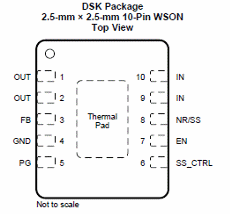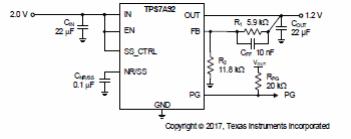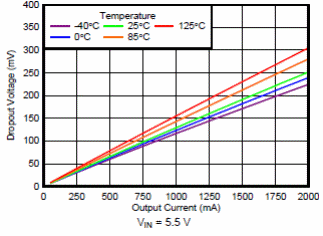The Texas Instruments TPS7A92 integrated circuit consists of a low-voltage (LDO) linear voltage regulator with low noise and the ability to deliver up to 2 A to a load with high accuracy. See in this article the main features of this component.
Launched in July 2017, Texas Instruments' TPS7A92 (Available from Mouser Electronics at http://www.mouser.com/new/Texas-Instruments/ti-tps7a92-voltage-regulator/) consists of a linear voltage regulator with high precision and low voltage drop with capacity to source currents up to 2 A.
The TPS7A92 has output voltages that can be set between 0.8 V and 5.2 V and the input voltages can be in the range between 1.4 V to 6.5 V.
The output noise is only 4.6 uVrms (10 Hz - 100 kHz) and the source rejection is 60 dB in DC, 40 dB in 100 kHz and 40 dB in 1 MHz.
When supplying 2 A currents to a load, the voltage drop is only 180 mV and for the adjustment of the output voltage is made using only two resistors.
The regulator accuracy is 1% for the output voltage, and in addition it produces the soft-start feature to reduce the surge current.
The TPS7A92 is especially designed to power noise-sensitive components such as those used in high-speed communication, m-video, medical or test and measurement equipment.
The housing is a 10 pins type, measuring only 2.5 x 2.5 mm as shown in figure 1.

The full datasheet of TPS7A92 can be accessed at: http://www.ti.com/lit/ds/symlink/tps7a92.pdf
A typical application circuit for a 1.2 V output is shown in figure 2, obtained from the own component datasheet.

An interesting graph is shown in figure 3 where we have the voltage drop in the component as a function of the output current.

Several other graphics with component features are available on the datasheet.



